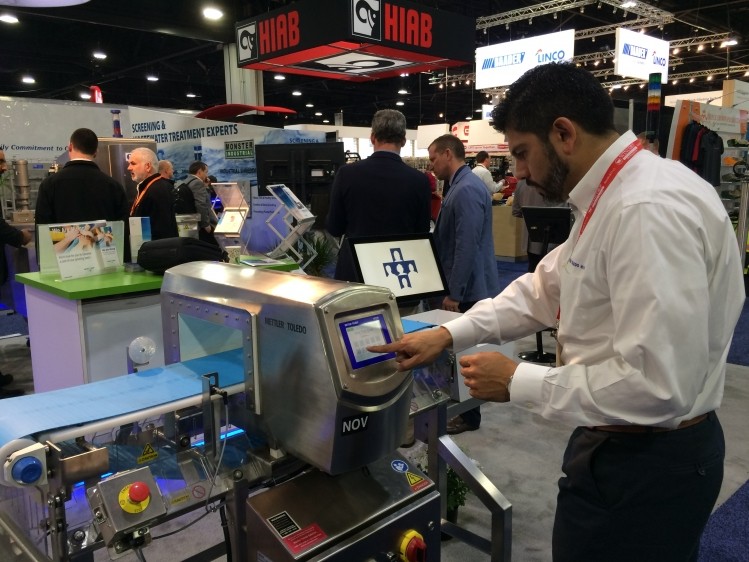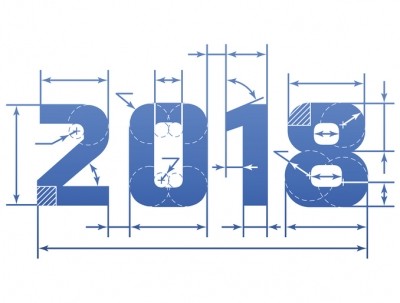Special Edition: Reports from IPPE
Feed screening systems see increasing industry interest

We caught up with Camilo Sanchez, product manager in metal detection with Mettler Toledo, at the International Packaging and Processing Expo (IPPE) in Atlanta to hear about industry trends and innovations happening with feed safety and feed screening technology.
The company has recently designed a system, that works with its screening technology, to help automate the feed checking process and reduce the potential for “false positive” tests for metal particulates in feed or feed ingredients, he said.
“You don’t want one of these larger animals to ingest a metal piece because it would go against their own health and because you would lose productivity,” he said.
Additionally, the increase in regulations both in the US and in other countries has made producers more aware of risks and the need for improved record keeping, he said.
Metal detection and innovation
The Ohio-based company offers a series of detectors for producers in North and South America designed to find several types of metal particulate and that can be used at different stages in the feed production process, said Sanchez.
The technology includes systems that examine bulk ingredients when, for example, being moved from a silo, or products being transferred into large ingredient totes.
“Our approach in trying to help the customer through a consultative sales process [that includes] identifying the pain points and identifying what the customer is ultimately trying to achieve with implementation of one of these systems,” he said.
Different flow rates or sizes of bagged product can be managed within the systems.
The process of setting up a detector and screening feed includes examining where in the process contamination occurred, he said. “A very important part of this process is not only identifying the contaminant, but also trying to do a root cause analysis to identify where are these metal contaminants coming from?”
That step is critical because it allows producers to prevent it from happening again, he said.
The most recent innovation, the profile advantage system, can be trained to handle a feed that has been enriched with a metallic additive, like an iron supplement, said Sanchez. “In feed, sometimes you enrich the product with things like ferrous, iron supplements, and those supplement can create conditions in which the metal detector might think there are contaminates and that is where these technology comes into play,” he added.
“The machine will be capable of identifying whether or not the product has been enriched and instead of rejecting it, [the technology] will be able to identify that while there is a lot of iron, it is part of the recipe."
It uses multi-simultaneous frequency and product signal suppression to sort past the ingredients that once would have triggered the detector, he said. The system also can store multiple recipes and be operated in multiple languages.
“We’re able to retain the current levels of sensitivity without incurring false rejections,” he said.
Industry trends and education
Market expansion and awareness has been increasingly widespread, he said. “We see it growing here in the US and in countries in the south – especially beef producing markets like Brazil and Argentina, where multinational companies are becoming more conscious about the quality of their own products,” he added.
"A lot of the growth that we’re seeing probably has to do with customers become more and more conscious of the supply chain and areas where they might be creating risk for their own brand and of course for the ultimate customer.”
Metal remains a contaminant that generates high levels of concern, and is one that can be found and eliminated, he said.
Some of the increased interest in contaminant screening tools may also stem from regulatory actions like the ongoing roll-out of the US Food Safety Modernization Act (FSMA) rules, he said.
To address regulatory topics, Mettler has two added two food safety experts to its staff as an educational resource, he said. “They would visit customers, they would do seminars, they would help customers do internal audits to identify gaps or areas in which they could improve their food safety processes – especially with FSMA, it’s a significant concern,” he added.
The feed screening systems can also be used to help track ingredient and feed lot numbers and other records used in the regulatory systems, he said.
False positives
Another reason that the educational component of working with a metal detection system is stressed is that the technology does have some limitations, said Sanchez.
“You can fool any type of technology,” he said. There are some places where an installed metal detector has been turned off because it was not well implemented, he added.
When a detector reports a high number of false positives it can slow down production and generate a large amount of waste product, he said.
“If you are trying to fix a problem and you give a solution that is half the way there, you can actually create a larger problem for the customer,” he said. “Because now you are falsely rejecting a good product, and you are generating a lot of waste and that is what we are trying to avoid.”













